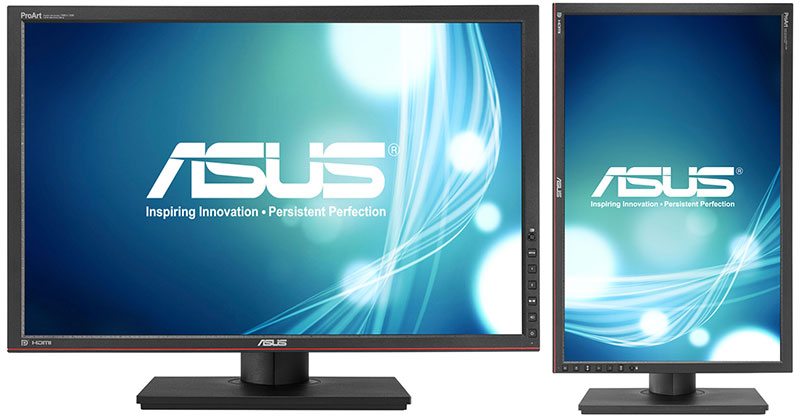Asus ProArt PA249Q 24″ AH-IPS LCD Monitor Review
Chris Hadley / 11 years ago
When it comes to testing a screen, there are a number of individual factors that every person looks for, I personally look for a crisp bright image, with a real depth of colour (in other words, vibrant reds greens & blues and deep blacks) that doesn’t look washed out when used in a bright environment. At the same time I look for a screen that works not only in a working environment (the environment that my screens spend most of their time) but also for watching movies and gaming.
The first thing that will become apparent, especially when looking at this panel alongside another LCD is the pure quality of the IPS screen in relation to a standard LED backlit LCD. The colour reproduction especially is significantly better and it easily puts other panels to shame. By watching through Toy Story 3 – a film that I have found is great for testing colour processing, the amount of detail that the PA249Q is able to give is noting less than outstanding.
When it comes to using the screen in an environment more close to its design purpose, in this case Photoshop, I was a little sceptical that the extra 120px in height was going to make that much of a difference, but yet again it showed its worth. When working with full HD images, the extra height allows for menus to still be displayed whilst not interfering on the work space. Whilst working within Photoshop, the QuickGrid display overlay in addition to the Adobe RGB Splendid colour preset helped when editing photos for printing, getting them to the exact size needed without any need for the image to be made to fit the print size.
When it came round to gaming, we all know that the bigger resolutions allow for more to be displayed (obviously) and the extra 120px in height again gave just that little bit more, especially when playing FPS games where you have to look up and down more to see what’s around you. I also noted that the pre-calibrated IPS panel gave a feel of so much more depth to the image with sharper colours and more definition to the scenery, even when playing ‘darker’ games such as Metro 2033.




















